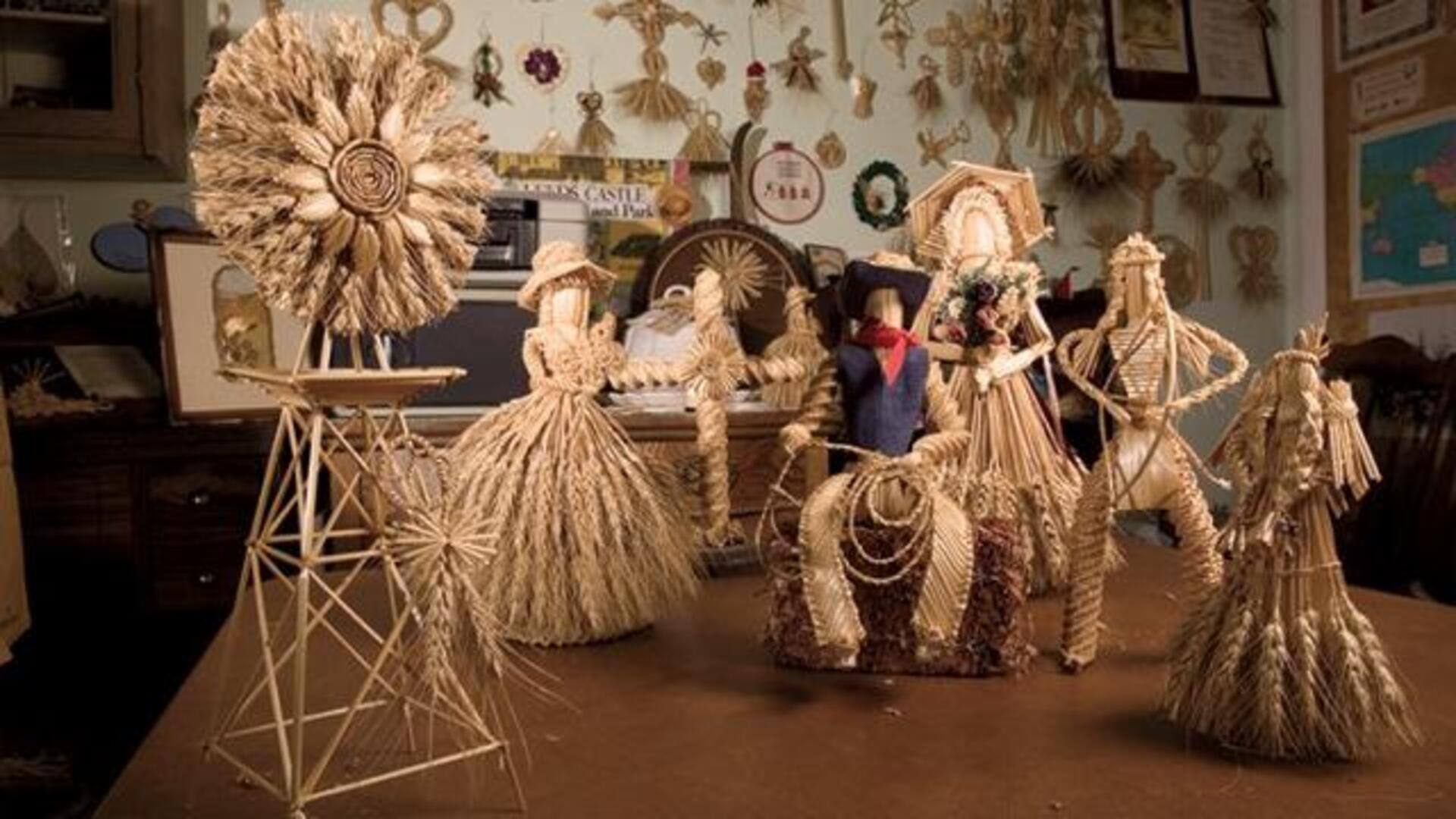
Wheat weaving: History, significance, and techniques
What's the story
Wheat weaving is the art of crafting intricate decorations from wheat stalks. Originating from agricultural traditions, it signifies prosperity and fertility. This centuries-old practice transcends cultures, combining tradition with creativity. Even today, it is a treasured skill, employing simple tools to create complex designs, echoing its cultural significance and artistic value.
Origins
The history and significance of wheat weaving
Wheat weaving originated in pre-Christian times as a symbolic ritual wherein farmers created woven wheat offerings to ensure a plentiful harvest. These offerings, steeped in folklore, were thought to house the spirit of the harvest itself. Over time, this ancient craft transcended its ritualistic roots, transforming into a beautiful art form. Different cultures have since incorporated their unique symbols and patterns, further enhancing the tradition's diversity and cultural significance.
Getting started
Basic techniques and tools required
To start wheat weaving, you only need a few simple tools: long-stemmed wheat stalks, scissors, and twine. The first step is to soak the wheat stalks to make them flexible, then you can weave them into different shapes. Beginners usually start with simple braids or spirals, and as they get comfortable, they can move on to more complex designs like corn dollies or harvest knots.
Diversity
Exploring different styles across cultures
Wheat weaving traditions vary significantly by region, each embodying its unique cultural history. While England cherishes corn dollies as symbols of a bountiful harvest, Eastern Europe favors complex geometric designs. This global diversity provides a wealth of techniques and designs for enthusiasts to explore, highlighting the art form's wide cultural relevance and artistic versatility.
Mastery
Tips for aspiring wheat weavers
If you want to become proficient at wheat weaving, don't be discouraged if your first attempts aren't perfect. Patience and practice are essential. Begin with simple projects to gain confidence and develop your skills. Consider attending workshops or joining online communities to learn from experienced weavers. Don't be afraid to experiment with different types of wheat. This can add unique textures and effects to your work.